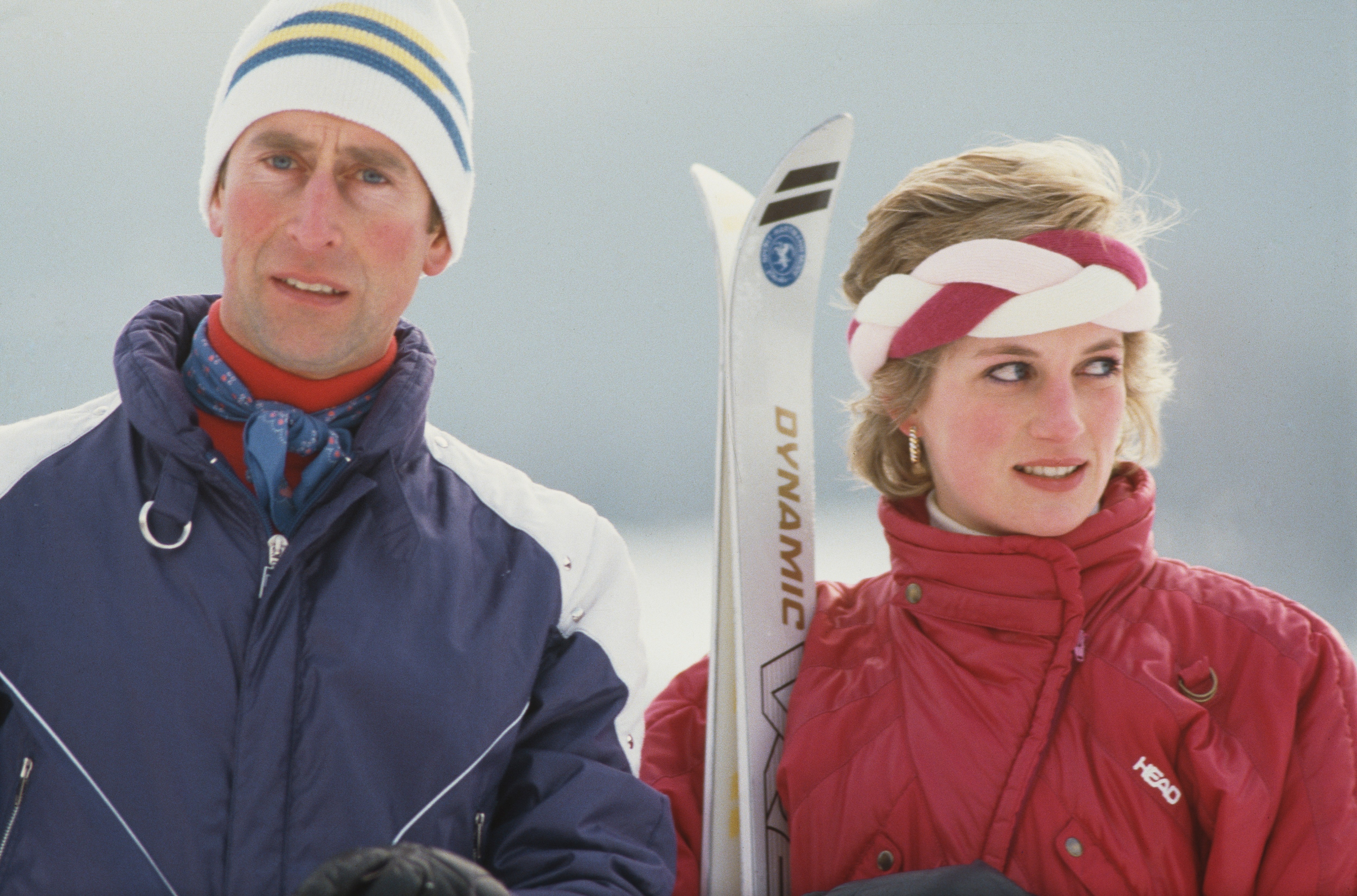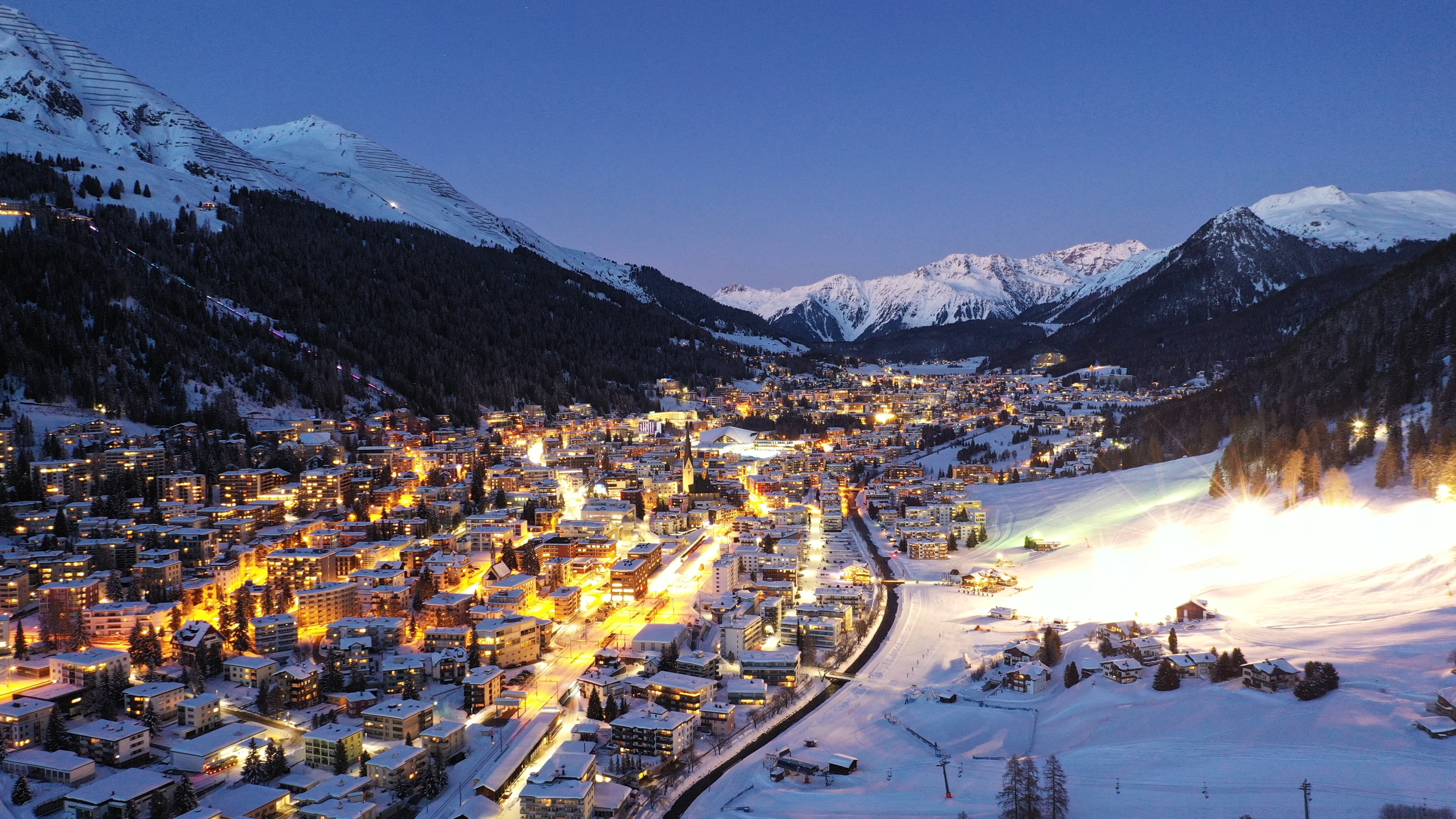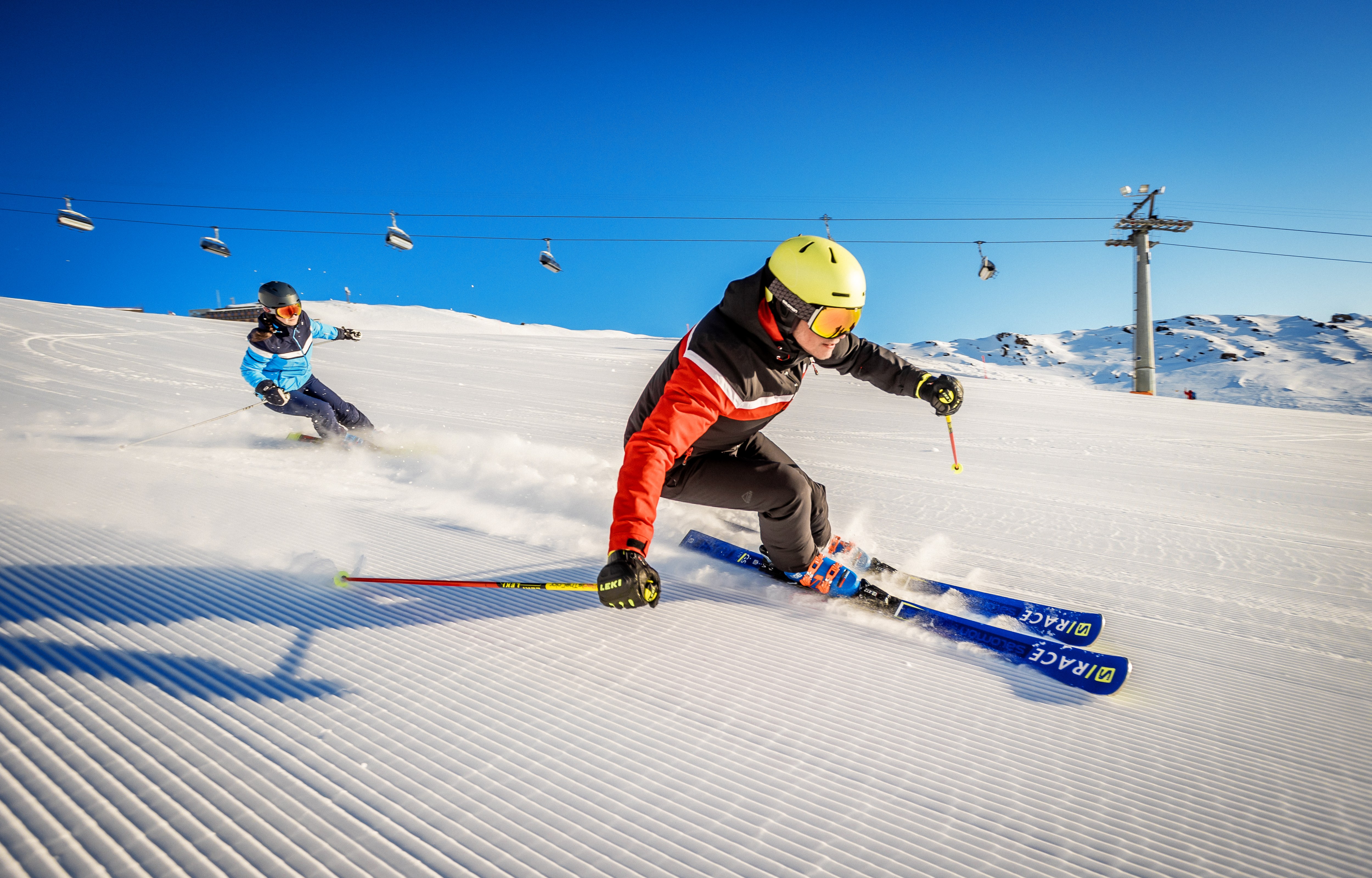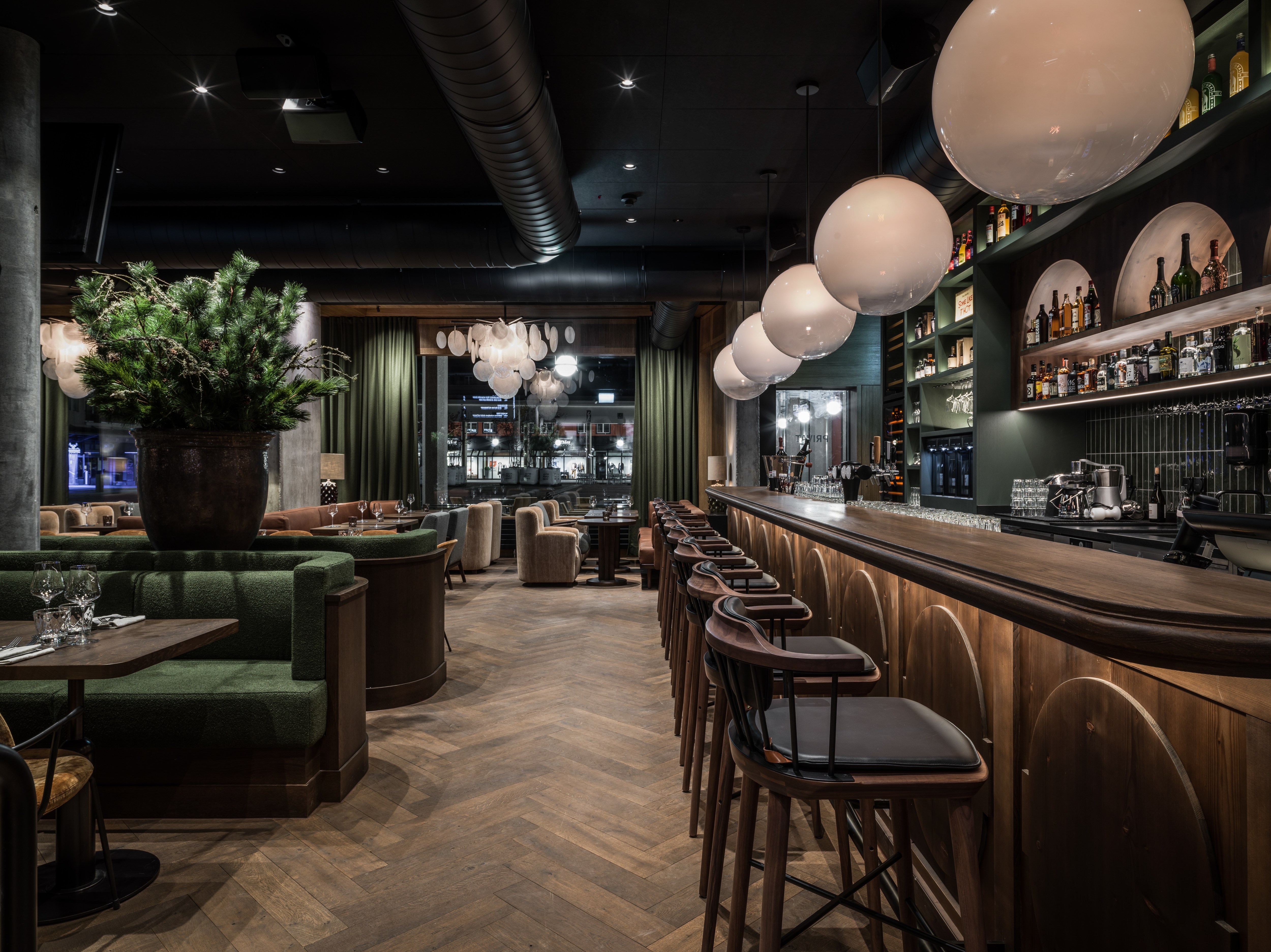Think of the town of Davos in the Swiss Alps and its neighbouring village of Klosters and two things probably spring to mind.
Firstly there’s the chichiness. The resorts have been a favoured destination for high rollers since the 1950s, when a procession of Hollywood stars including Greta Garbo, Gene Kelly and Rex Harrison started visiting. King Charles, who first came here in the late 1970s, is famously linked with the place — it’s where in the 1980s he was photographed skiing with Princess Diana and their children and lost his friend Major Hugh Lindsay in an avalanche, and in 2005 was overheard saying what he thought of the BBC correspondent Nicholas Witchell (“I can’t bear that man. I mean, he is so awful. He really is”).
You’ll also know Davos as the venue for the World Economic Forum (WEF), the January event where political leaders, bankers and industry titans come to shape the globe.
That this mountain resort is also a skiing destination seems rather minor in comparison — it’s not a common choice for the typical snow enthusiast, who might assume it to be out of reach for people with pockets not as deep as those of WEF attendees. Yet my recent trip proved that to not be the case. As a rule, Switzerland isn’t cheap (the sandwich, packet of crisps and bottle of sparkling water that I bought at Zurich airport set me back £20), but there are bargains to be found.
• This Italian resort is Europe’s best-value ski break — here’s why
Advertisement
This part of the Swiss Alps, it transpires, is a truly great place to ski, with five linked areas comprising 190 miles of pistes covered by one lift pass (six days for £343pp; davos.ch). And you don’t need to spend hundreds of pounds on car rental as Davos can be easily reached by train in two hours from the airport; my return ticket cost £118.
Davos is one of numerous Swiss ski resorts (also including Laax) aiming to be carbon neutral by 2030, and encouraging more travellers to make the enjoyable trip there by rail is part of the plan (sbb.ch). And the journey to Davos Platz is quite something, rolling southeast through forests, lakes and lush pastureland so green, even in winter, it could have been put through enhancement software. Then there’s the climb into the mountains, where the scenery was even more breathtaking; I saw wide pistes tumbling down from the peaks and opportunities for powdery off-piste runs.
Unless you’re desperate to catch a glimpse of Donald Trump doing his victory dance after being sworn in as US president on January 20, Davos is probably best avoided from that date to January 24, when the 3,000 or so WEF delegates will be in town. Many residents make themselves scarce or cash in by renting out their properties during the forum; one told me that the place feels like a “war zone”, with snipers on roofs and black limousines parading along the normally sleepy streets.
Thanks to the capacity needed for the WEF, Davos has a lot of accommodation, and bargains can be found at other times of the year, with options from hostels and hotels with two or three stars to luxury stays. For example, a double room at the smart three-star Hotel Edelweiss in December costs from £132 (hotel-edelweiss-davos.ch).
• 20 of the best ski resorts in Europe for 2024
Advertisement
For convenience and value I chose the comfortable, 93-room Grischa, which is barely 50 yards from the train station. Opened in 2011 it has doubles that start at £189 early in the season. Although there is no pool or sauna, it has five great restaurants offering Chinese, sushi and local specialities, including an unusual dish of fried berries, Brussels sprouts, feta and almonds served with pizokel, a sort of buckwheat dumpling (£30). As is the Swiss way, the hotel is supremely neat and well organised, to the extent that even the boot rooms smelt clean and fresh (hotelgrischa.ch).
Alternatively, for stupendous mountain views on a budget there’s the Berghaus Weissfluhgipfel, which stands at the top of the Parsenn ski area, accessed via the hundred-year-old funicular that climbs the 2,693m (8,835ft) Weissfluhjoch from central Davos. I visited for lunch (£10 for a bowl of soup), but it also has decent if basic accommodation (room-only doubles from £106; restaurant-weissfluhgipfel.ch). Stay here and the reward is the thrill of being able to wake early to ski down the mountain alone, getting fresh tracks before the lifts open. I skied the incredible eight-mile run to the farming hamlets of Küblis and Serneus, returning by train to Klosters then on to Davos.
• 10 most snowsure ski resorts in Europe for your next break
It was on that ski route that I found Kessler’s Kulm, one of King Charles’s favourite restaurants, as photographs and a thank-you card signed by him and the Queen remind diners. The King, we were told, last visited in the winter of 2021-22, unable to ski the next season because he couldn’t risk injury before the coronation. It surprised me that such an ordinary, homely spot was a royal haunt, but staff told me that the King “just can’t resist the cheese platter”. Personally I couldn’t resist the schnitzel and fries (£34; kessler-kulm.ch), though a plate of cheese and cold meats was always a good option across the many traditional mountain restaurants on the slopes (from £20).
Sticking to a budget meant avoiding the many smart restaurants. However, I frequently bought the local speciality, birnbrot, a malty bake made with dried pears, figs and nuts that was especially delicious with a thin coating of butter, and tasty Swiss cheese from the Davos branch of Coop, which also sold very good wines for less than a tenner.
Advertisement
That was enough to fuel my fun-filled days zipping around the many excellent wide, uncrowded runs serviced by fast, virtually empty lifts. I would take the funicular to explore the vast Parsenn ski area, which is also accessed by the main cable car next to Klosters railway station. Jakobshorn, the other big ski area in Davos, had a fun, half-mile, tree-lined run (the No 10) that took me past mini waterfalls and winter hikers straight back into Davos for coffee or hot chocolate.
While the Madrisa ski area in Klosters is family-friendly, with carpet lifts, two snow parks and a five-mile toboggan run, the area is not on the whole set up for beginners. Gentler slopes around the Berghotel Schatzalp in Davos — an extraordinary-looking art nouveau building that was originally a sanatorium and provided inspiration for the hospital in Thomas Mann’s 1924 novel The Magic Mountain — are reached via another funicular.
Mann visited Davos when his wife, Katia, was treated for tuberculosis here, becoming the second literary great to be associated with the area after Arthur Conan Doyle, who wrote about skiing in Davos for The Strand Magazine in 1894.
The Berghotel is the most powerful reminder that Davos was a European centre for TB treatment during that period and it welcomes visitors interested in seeing original features such as its old lift workings and sinks in the corridors, which give it a slightly eerie vibe. However, the managers aren’t quite so keen to show you the area behind the old lifts, from where the bodies of those who didn’t make it through their treatment were sledged down the mountain.
The layout of the town is another reminder of those days, with its wide streets allowing for free circulation of air. Still, that is all in the past and today you can enjoy the sweet Alpine breeze and uncluttered streets simply for pleasure — happy in the knowledge that you don’t have to attend any economic debates.
Ben Dowell was a guest of Destination Davos Klosters (davos.ch) and Switzerland Tourism (myswitzerland.com). Fly to Davos
Advertisement
Become a subscriber and, along with unlimited digital access to The Times and The Sunday Times, you can enjoy a collection of travel offers and competitions curated by our trusted travel partners, especially for Times+ members
Sign up for our Times Travel newsletter and follow us on Instagram and X





